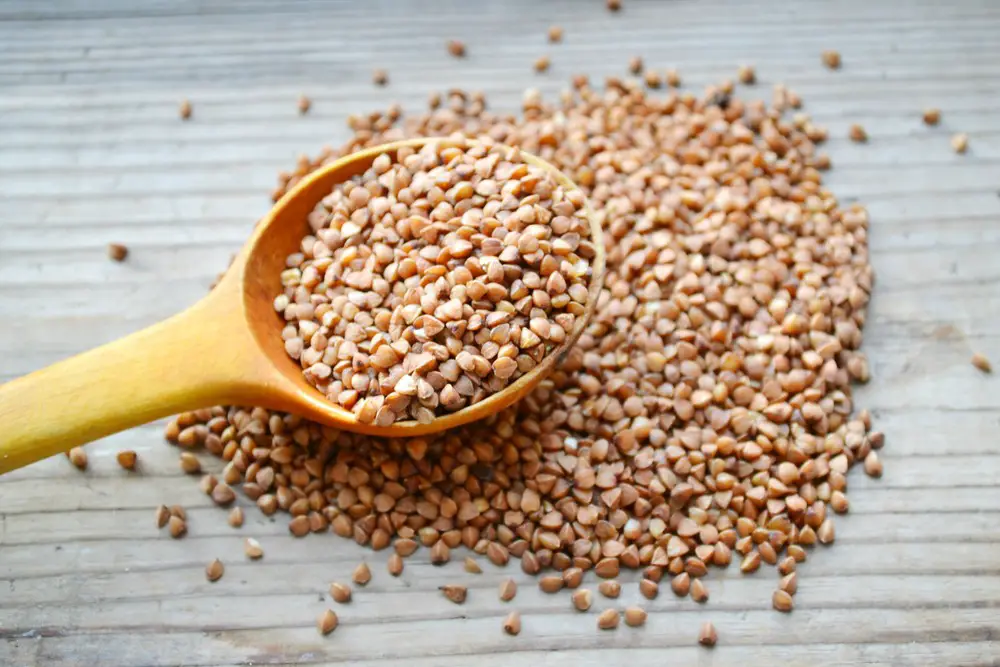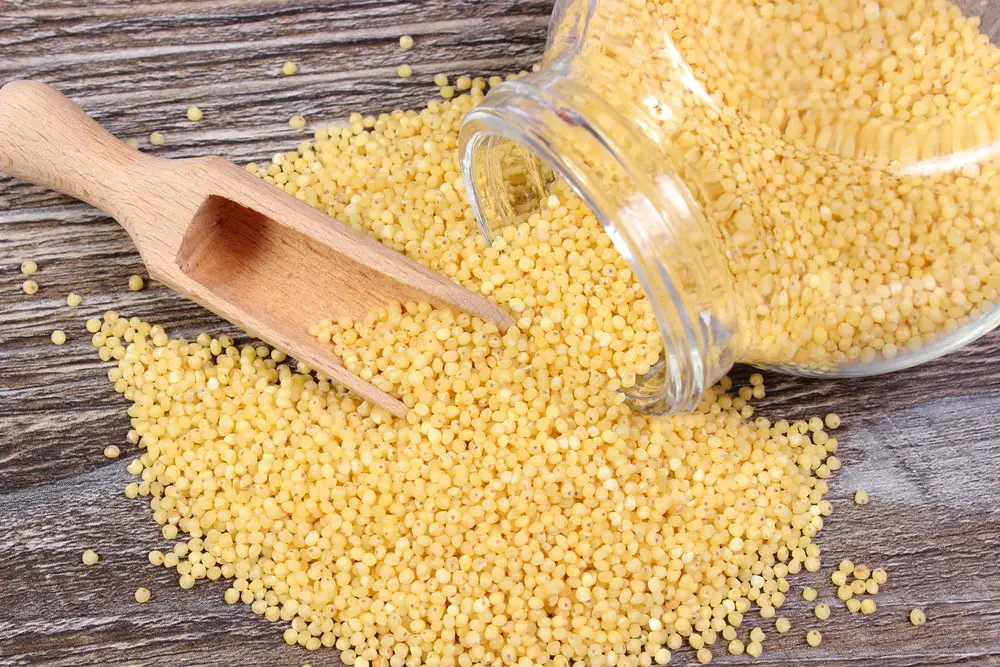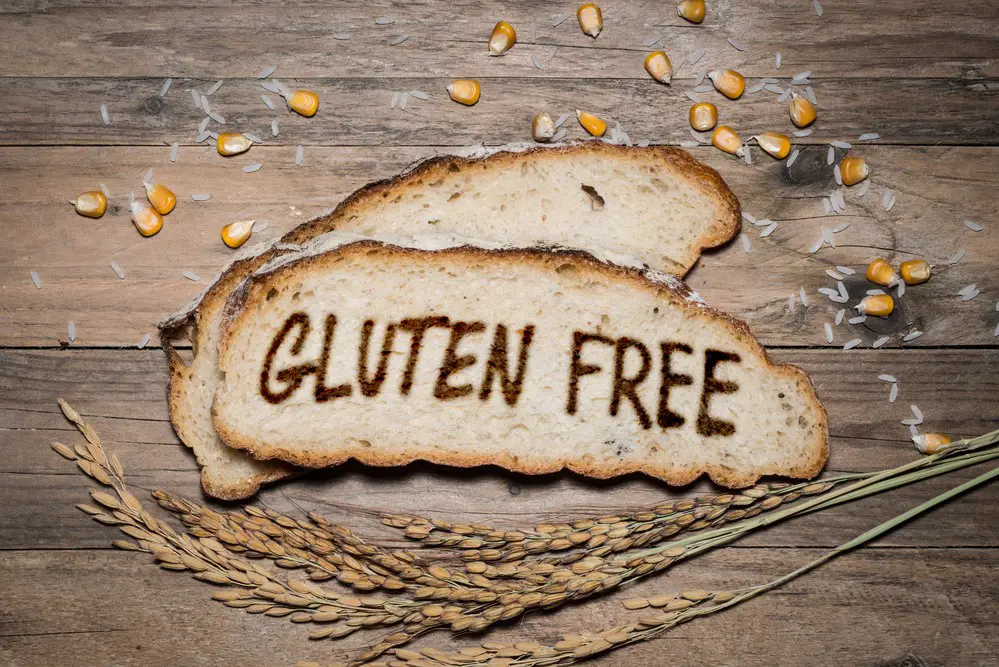The demand for vegan and gluten-free products has increased significantly in recent years. Many individuals adopt a plant-based lifestyle, while others must eliminate gluten due to health conditions such as celiac disease or non-celiac gluten sensitivity. These two consumer groups have led to a growing market for vegan, gluten-free products, which provide nutritious and delicious alternatives to traditional food options.
Manufacturers have taken note of this trend, resulting in a wide variety of vegan, gluten-free products available now. From baked goods to meat substitutes and dairy-free alternatives, those who choose or need to live a vegan, gluten-free lifestyle can find plenty of options to satisfy their cravings. Local grocery stores and online retailers now carry various products to cater to this growing market.
This article will explore the ins and outs of vegan, gluten-free products, discussing their benefits and how to incorporate them into your daily life. Whether you choose this lifestyle for health reasons or personal beliefs, it is essential to be aware of the available options and how to make informed decisions when selecting these products.
Understanding Vegan and Gluten-Free Diets
Vegan Diet
A vegan diet is a lifestyle choice that abstains from consuming animal-derived products. This includes meat, dairy, eggs, and anything containing animal byproducts. Some reasons for veganism may include health benefits, environmental concerns, and ethical considerations.
People who follow a vegan diet can get all their essential nutrients from plant-based sources. These include fruits, vegetables, grains, legumes, nuts, and seeds. Vegans must consume various foods to ensure a well-rounded diet, including sufficient protein, vitamins, and minerals.

Gluten-Free Diet
A gluten-free diet eliminates gluten, wheat, barley, and rye protein. This dietary restriction is essential for individuals with celiac disease, an autoimmune disorder that causes damage to the small intestine when gluten is ingested. However, some people without celiac disease may also follow a gluten-free diet due to gluten intolerance or personal preference.
Avoiding gluten-free foods, such as traditional pasta, bread, and cereals, is crucial when following a gluten-free diet. Fortunately, many gluten-free alternatives are available, including gluten-free grains like quinoa, brown rice, and buckwheat. Consuming a variety of gluten-free whole grains, fruits, vegetables, legumes, and protein sources can help ensure a balanced and nutritious diet.
Here is a brief list of common vegan and gluten-free food sources:
| Vegan | Gluten-Free |
|---|---|
| Fruits | Quinoa |
| Vegetables | Brown Rice |
| Legumes | Buckwheat |
| Nuts & Seeds | Corn |
| Grains | Gluten-Free Oats |
By understanding the basics of vegan and gluten-free diets, one can make informed decisions on which lifestyle suits their needs and preferences. These guidelines can help those new to these diets transition smoothly and ensure proper nutrition.
Common Vegan Gluten-Free Grains and Staples
Quinoa
Quinoa is a popular gluten-free grain known for its high protein content. It is a complete protein containing all nine essential amino acids. Quinoa can be cooked like rice and used in various dishes, such as salads and stir-fries.
Brown Rice
Brown rice is a whole grain, containing more fiber and nutrients than its white counterpart. As a gluten-free option, it’s suitable for those on a vegan diet. Brown rice can be used in many dishes, from stir-fries to veggie bowls, and can even be made into flour for baking.
Buckwheat

Despite its name, buckwheat is not related to wheat and is gluten-free. It’s a versatile grain that can be used in various forms, such as groats, noodles, and flour. Buckwheat is a good source of essential nutrients, including protein, fiber, and antioxidants.
Amaranth
Amaranth is an ancient gluten-free grain that is rich in protein, fiber, and minerals. It can be cooked similarly to rice or used as flour in baking. Its small, nutty-flavored seeds can also be added to salads, soups, or stews.
Millet

Millet is a naturally gluten-free grain rich in fiber, vitamins, and minerals. It can be cooked like rice or used as flour in baking. Millet’s mild flavor and fluffy texture make it an excellent addition to various dishes, including stir-fries, salads, and porridges.
Corn
Corn, a gluten-free and versatile grain, is widely used in many vegan dishes. Cornmeal, corn flour, and cornstarch can be utilized for baking, while whole corn kernels can be enjoyed in soups, salads, and grilled dishes.
Oats
While oats are naturally gluten-free, they can sometimes be contaminated with wheat during processing. It’s important to look for certified gluten-free oats when following a gluten-free, vegan diet. Oats can be used in various forms, such as rolled, steel-cut, or as flour for baking. They are a great source of fiber, protein, and essential nutrients.
Protein-Rich Vegan Gluten-Free Foods
Lentils and Beans
Lentils and beans, such as chickpeas, are excellent protein sources for vegans who must also avoid gluten. One cup of cooked lentils provides approximately 18 grams of protein, while a cup of cooked chickpeas offers around 15 grams. These protein-rich foods are versatile and can be incorporated into a variety of recipes:
- Lentil soups and stews
- Chickpea salads
- Bean-based spreads like hummus
Tofu
Tofu, made from soybeans, is another protein-rich option, with roughly 10 grams of protein per 3 ounces (85 grams) serving. Tofu can be added to stir-fries, salads, and other dishes for a protein boost. You can also find various tofu products like:
- Tofu-based meat alternatives
- Tofu scramble for breakfast
Seeds
Seeds, such as chia, flaxseeds, sunflower, and pumpkin seeds, are also rich in protein. For example, 2 tablespoons of chia seeds contain about 4 grams of protein. Seeds can easily be incorporated into your dietary routine:
- Sprinkle them on salads
- Add them to smoothies
- Use them as a topping for yogurt
Nuts
Nuts, including almonds, walnuts, and pistachios, provide healthy fats and protein content. One ounce (28g) of almonds contains about 6 grams of protein. Nuts can be enjoyed on their own or in various dishes:
- Nut butter spreads
- As a topping for oatmeal or yogurt
- In vegan nut-based cheese
Pea Protein
Pea protein is an increasingly popular vegan and gluten-free option derived from yellow peas. It is often used as a base for vegan protein powders and meat alternatives. Pea protein content can vary depending on the product but typically ranges from 15 to 25 grams per serving.
Seitan
Although a popular protein source for many vegans, Seitan is not gluten-free, as it is made from wheat gluten. Thus, it is unsuitable for those following a gluten-free diet and should be avoided.
Vegan Gluten-Free Flour Options
Almond Flour
Almond flour is a gluten-free and vegan option made from ground almonds. It is low in carbohydrates and high in protein and healthy fats. It works well in baking and can replace wheat flour in recipes. However, its texture may not provide the same rise as wheat flour, so it’s essential to adjust recipes accordingly.
Brown Rice Flour
Brown rice flour, made from whole grain rice with an intact outer bran layer, offers a hearty and slightly nutty flavor. Its gluten-free and vegan properties make it ideal for baked goods like bread, cookies, and pancakes. It can be combined with other gluten-free flours or thickeners to achieve the best texture and taste. Brown rice flour also contains nutrients like fiber, vitamins, and minerals.
Sorghum Flour
Sorghum flour is another gluten-free and vegan option derived from an ancient grain called sorghum. It has a mild, neutral flavor and is often combined with other gluten-free flour. Sorghum flour is an excellent source of fiber, protein, and essential nutrients, including antioxidants that provide health benefits. It can be used in muffins, bread, and even pizza crust recipes.
Corn Flour
Corn flour, made from finely ground cornmeal, is a gluten-free and vegan alternative for various dishes. It’s slightly sweet taste and smooth texture make it suitable for making cornbread, tortillas, and cakes. Corn flour can also be used as a thickener in soups, sauces, and stews. Rich in nutrients like iron, fiber, and B vitamins, corn flour brings additional health benefits to your meals.
Vegan Gluten-Free Recipes and Meal Ideas
Finding delicious vegan and gluten-free recipes can seem challenging, but every meal has various tasty options. In this section, we will discuss some meal ideas and recipes for breakfast, lunch, and dinner, as well as snacks and desserts.
Breakfast
Start your day with these energizing breakfast options:
- Smoothie bowls: Blend a base of frozen fruit, plant-based milk, and a scoop of vegan protein powder. Top with fresh fruit, nuts, and seeds.
- Chia seed pudding: Mix chia seeds with plant-based milk, sweetener, and your choice of fruit. Refrigerate overnight for a creamy, nutrient-packed breakfast.
- Gluten-free pancakes: Combine oat flour, plant-based milk, banana, and baking powder. Cook on a non-stick pan for tasty, vegan pancakes.
Lunch
Satisfy your hunger with these delicious lunch ideas:
- Veggie burgers: Create patties with mashed beans, diced veggies, and gluten-free bread crumbs. Grill or bake and serve on gluten-free buns with your favorite toppings.
- Sandwiches: Use gluten-free bread and fill it with avocado, roasted vegetables, and hummus for a mouthwatering sandwich. Add lettuce and tomato for extra freshness.
- Soups: Enjoy a warm bowl of vegetable soup with ingredients like lentils, carrots, celery, and potatoes. Use gluten-free vegetable broth as a base.
Dinner
Indulge in these scrumptious dinner recipes:
- Stir-fries: Sauté a mix of vegetables, tofu, or tempeh in gluten-free soy sauce, and serve over a bed of cooked quinoa or gluten-free noodles.
- Stuffed bell peppers: Fill bell peppers with a mixture of cooked quinoa, black beans, and veggies. Bake until the peppers are tender and the filling is heated through.
- Spaghetti squash: Roast and serve with your favorite vegan marinara sauce for a pasta alternative.
Snacks and Desserts
Craving something sweet or savory? Try these guilt-free options:
- Fruit: Enjoy a fresh salad or kabobs for a refreshing snack.
- Gluten-free bread: Spread hummus, nut butter, or mashed avocado on a slice of gluten-free bread for a satisfying treat.
- Cake: Bake a vegan, gluten-free cake by using a mix of almond and rice flour, a flaxseed meal, and your favorite plant-based milk. Add fruit, chocolate chips, or nuts for extra flavor.
These are just a few examples of vegan, gluten-free recipes and meal ideas to explore, allowing you to enjoy a diverse plant-based diet while maintaining a gluten-free lifestyle.
Favorite Vegan Gluten-Free Brands and Products
When looking for vegan, gluten-free products, it’s important to find brands that cater to this specific dietary preference. Several brands specialize in food items, from bread and crackers to pasta and chips.
Bob’s Red Mill is a popular brand catering to the vegan, gluten-free market. They offer a variety of products, including bread and baking mixes, cereals, and even flour, for those who prefer to bake their own goods. Their products can be found at most grocery stores and online.
For crackers and chips, Mary’s Gone Crackers is a fan-favorite brand. They offer several types of crackers and chips, all made with whole, natural ingredients. Their products are perfect for snacking and can be found in many grocery stores or purchased online.
Another go-to brand for vegan, gluten-free bread is Canyon Bakehouse. They specialize in making delicious loaves of bread, bagels, and buns made with clean ingredients. Their products can be easily found in the freezer section of most grocery stores or online.
Enjoy Life Foods is an excellent option for those with a sweet tooth. They are known for their delicious cookies and snack bars that cater to not only vegan and gluten-free consumers but also those with other food allergies. These products can be found online or in the snack aisle of your local grocery store.
When it comes to pasta, Tinkyada is an excellent choice. They offer a range of gluten-free pasta from brown rice, ensuring a delicious and satisfying meal. These pastas are available at most grocery stores and online.
While shopping for vegan, gluten-free products may seem challenging, numerous brands and options are available to satisfy any craving. Be sure to carefully read the labels to ensure the product meets vegan and gluten-free requirements before purchasing.
Avoiding Cross-Contamination
Ensuring a vegan, gluten-free product stays free from allergens or animal-derived ingredients requires diligence in avoiding cross-contamination. Cross-contamination can occur at various stages, from production to storage and even during meal preparation. Here are some ways to avoid cross-contamination.
One crucial aspect of avoiding cross-contamination is being aware of one’s surroundings. In manufacturing facilities, it is essential to ensure separate production lines for vegan, gluten-free products. These lines should be thoroughly cleaned and sanitized between production runs, and air filters should be maintained to prevent contaminants from entering the space.
Another important step is proper storage. Vegan, gluten-free products should be stored separately from those containing gluten or animal-derived ingredients. Appropriate labeling and sealed containers can help prevent mix-ups and protect the products from cross-contamination.
Using separate utensils and cutting boards for vegan, gluten-free products is vital when preparing meals. Cross-contamination can easily occur if the same utensils are used for allergen-free and allergen-containing products. Additionally, being cautious with shared appliances, like microwaves or ovens, is necessary – using dedicated trays or cookware can reduce the likelihood of cross-contamination.
In summary, being vigilant throughout the production process, using separate utensils and appliances, and proper storage are essential to avoiding cross-contamination with vegan, gluten-free products. Taking these precautions makes it possible to provide safe and allergen-free options for those following a vegan gluten-free diet.
Unsuitable Foods and Ingredients for Vegan Gluten-Free Diets
People on a vegan gluten-free diet must avoid certain foods and ingredients containing animal products or gluten. Below are some key ingredients to watch for when following this dietary lifestyle.
Gluten-containing Grains
- Ale: Made from barley, a gluten-containing grain
- Barley: Contains gluten; avoid in all forms
- Rye: A gluten-rich grain not suitable for gluten-free diets
- Oatmeal: May contain gluten due to cross-contamination with wheat, rye, or barley
- Wheat Gluten: The protein found in wheat; always avoid
Animal-derived Ingredients
- Casein: A protein often found in milk and dairy products
- Gelatin: Made from animal-derived collagen, typically found in gummy sweets and some cosmetics
- Shellac: A resin secreted by insects, used as a food glaze and in nail polish
- Lactose: A sugar found in milk and dairy products
Ambiguous Ingredients
Some ingredients, such as fatty acids, might not be vegan but can be derived from animal and plant sources. It’s essential to check the label and communicate with manufacturers when unsure.
By avoiding these ingredients, individuals following a vegan, gluten-free diet can maintain their lifestyle while promoting health and minimizing any adverse reactions to food.
FAQs
What are some popular vegan, gluten-free products available in the market?
- Dairy-free milk alternatives (e.g., almond, soy, oat, rice)
- Bean and lentil-based pasta
- Vegan gluten-free bread and crackers
- Plant-based protein sources (e.g., tofu, tempeh, seitan*)
- Meat substitutes (e.g., Beyond Meat, Gardein, Tofurky)
- Vegan gluten-free snack bars and granola
*Note: Although seitan is popular among vegans, it is made from wheat gluten and is unsuitable for people with gluten sensitivity or celiac disease.
How do I check if a product is both vegan and gluten-free?
Carefully read the product labels and ingredients list. Look for certification logos or phrases like “vegan,” “plant-based,” or “animal-free” to confirm its vegan status, and “gluten-free” or “GF” for gluten-free assurance. Remember that some products may still contain trace amounts of gluten or animal-derived ingredients due to manufacturing processes.
Is a vegan, gluten-free diet nutritionally adequate?
Yes, a vegan, gluten-free diet can be nutritionally adequate if planned properly. Paying attention to specific nutrients like protein, iron, calcium, vitamin B12, and omega-3 fatty acids is essential. Consuming a variety of whole, plant-based foods is key to maintaining a balanced diet.
Are vegan, gluten-free products more expensive?
The cost of vegan, gluten-free products varies. Some products may be more expensive than their conventional counterparts, while others are comparably priced. Shopping at specialized stores, bulk buying, or preparing meals at home using whole ingredients can help reduce costs.

